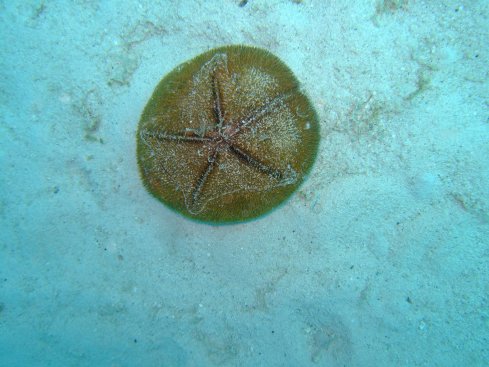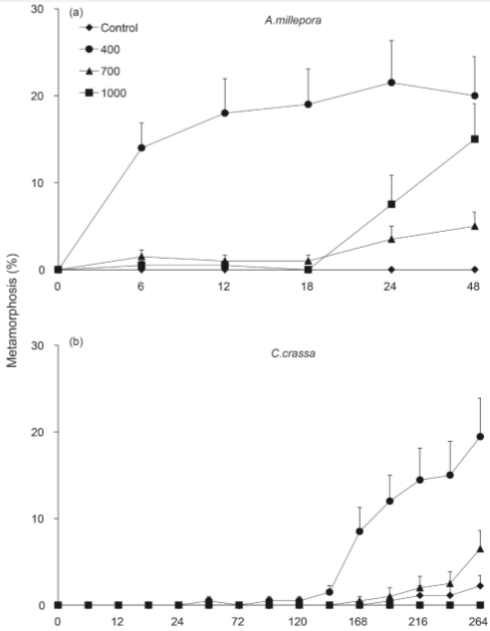Many marine organisms have at least a single larval stage. The reproductive adults release many offspring into the water column. These free swimming larvae become part of the zooplankton, being carried mostly by currents. This life stage is also very important to some species who as adults are benthic and once the larvae settles they are there for life. There are three methods of larval dispersion and development:
- Direct development or crawl-away larvae have a low dispersal potential. the young usually hatch from the egg looking very similar to the adults of the species.
- Lecithotropic larvae have more of a dispersal potential than crawl-away larvae. One thing that characterizes this type is that they are provided with a yolk sac, or some other form of nutrition. This finite source of nutrition only allows for a certain amount of time to disperse and settlement must occur before this nutrition source runs out.
- Planktotrophic larvae have the greatest dispersal potential. they can survive as pelagic larvae for the longest, as they are able to feed on smaller zooplankton and phytoplankton. Most sessile invertebrates have planktotrophic larvae.
There are many settlement cues, all of which vary from species to species.
Chemical cues are common and heavily studied. These cues are biological compounds created by another individual that larvae pick up on and use as a way to tell if a location is safe to settle in. These cues can be from adults of the same species, which ensures it is a safe place to settle, or from predators, which ensures its not a safe place to live. Raymond C. Highsmith looked at the induced settlement in sand dollars, Dendraster excentricus. He found that the larvae of D. excentricus show a preference for adult-associated sand, or sand with adults present. He found that the type of substrate didn’t matter, as long as adults were present, thus proving a chemical cue. the preference for this settlement cue is most likely due to absence of micropredators that feed on metamorphizing larvae, such as Leptochelia dubai, from areas where adults are present. the reworking of the substrate by the adult sand dollars makes it impossible for these micropredators to live there, leaving it a safe place to settle.

Physical settlement cues are also important for some species. Some larvae may only settle in areas with certain substrate types. Fish larvae are commonly seen to have these as they prefer certain habitat types. Whalan et al. looked at this largely ignored cue. They had five types of sessile marine invertebrates found on coral reefs, two species of scleractinian coral and three species of sponge. They found that both coral and one sponge had significantly higher settlement on tiles with microtopography that included divots that closely matched the larval width. This proves that physical cues also play a role in settlement.

Very interesting! The sand dollar larval preference for areas occupied by adults is especially intriguing! These studies demonstrating both chemical and physical cues affecting larval settlement are so important to the understanding of the community structure of reefs. Thanks for sharing this. Can you think of what future studies you would perform if you were a marine larval biologist?
LikeLike